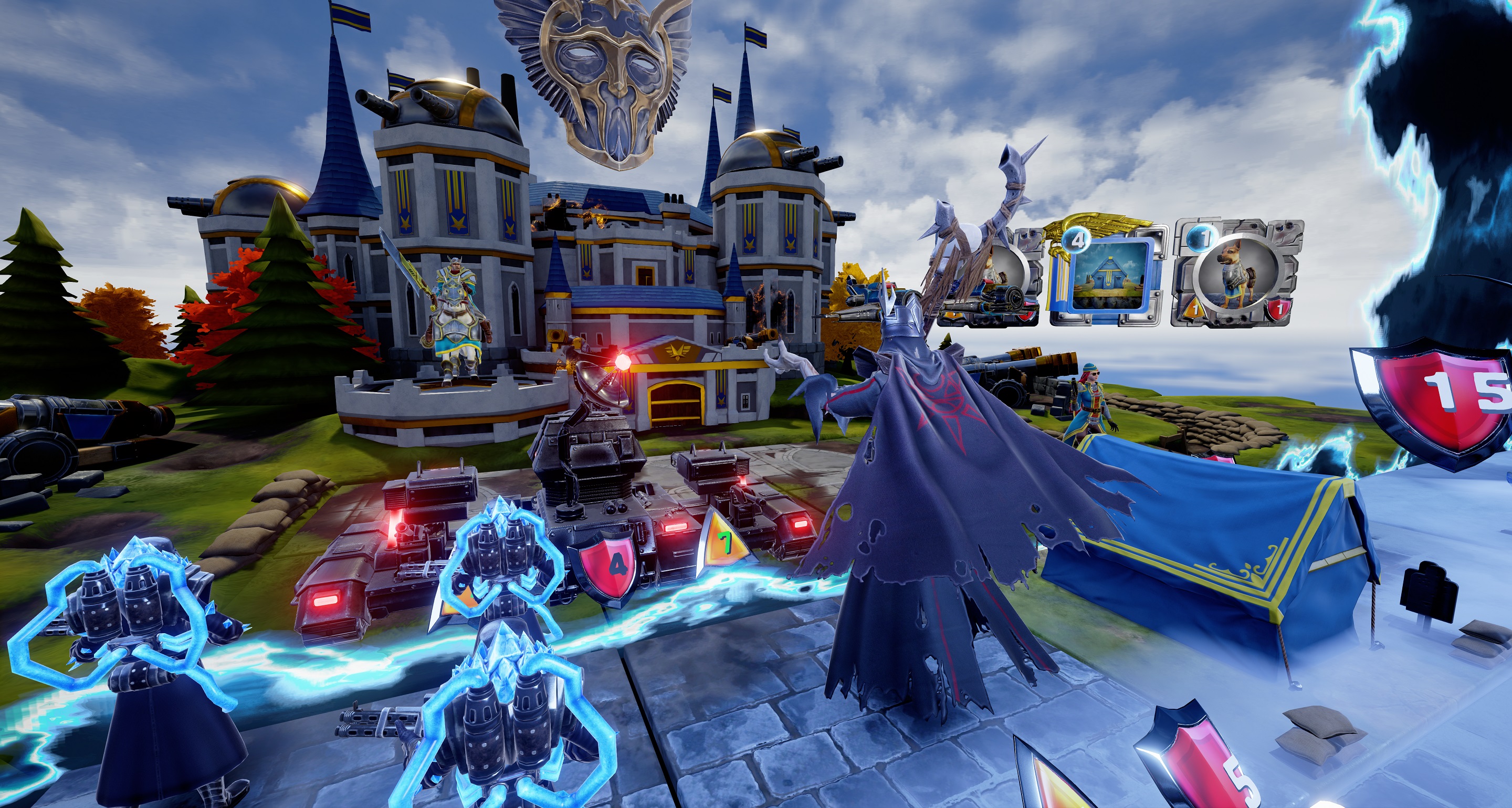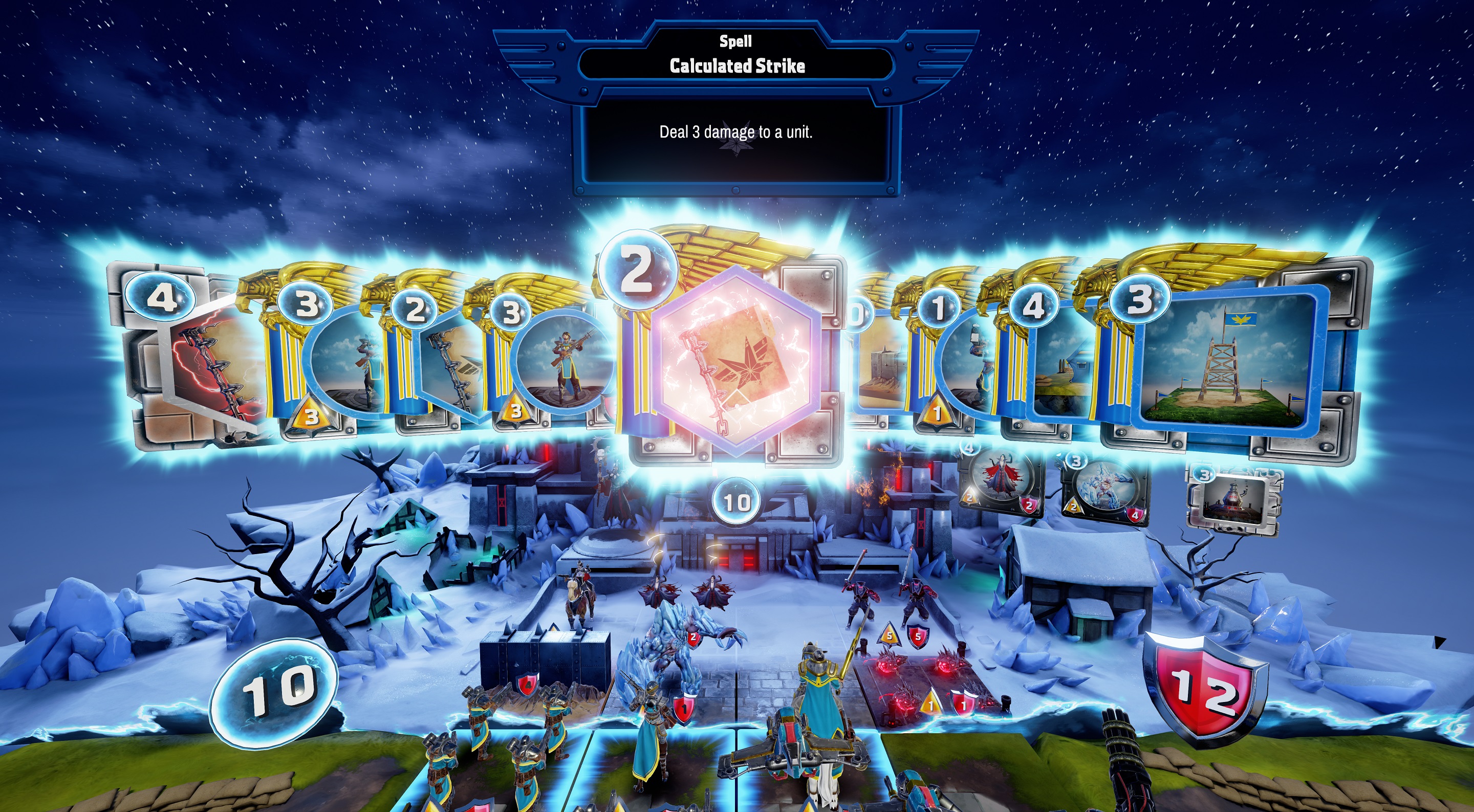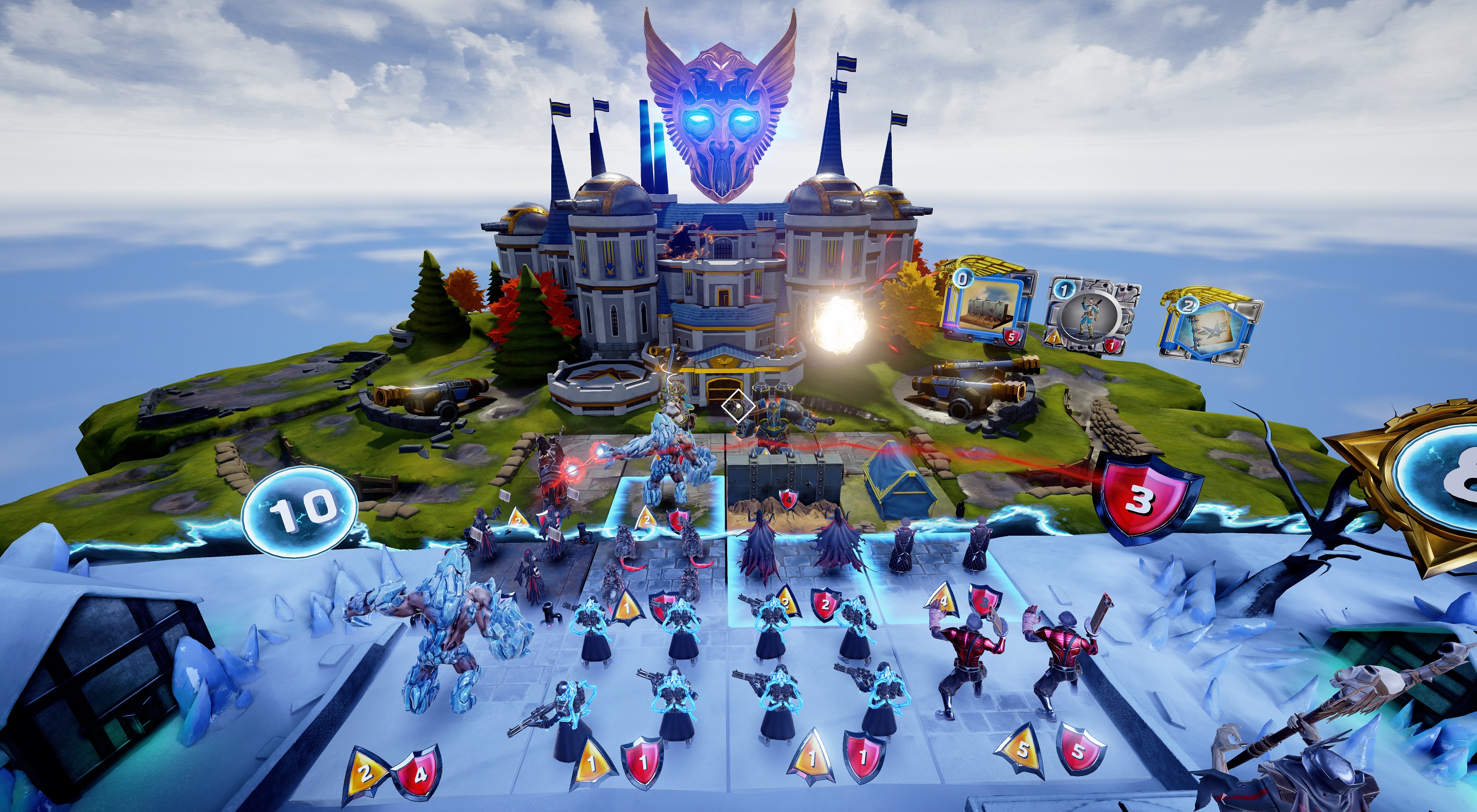'Dragon Front' Needs More VR Features To Succeed As Collectible Card Title

For developers, virtual reality provides an opportunity to bring an existing project to a different sort of medium, or to create an entirely new title altogether. We saw the former with Defense Grid 2: Enhanced VR Edition, and the latter with Crytek’s The Climb. The developers at High Voltage Software are attempting to create one of the first collectible card-based games in VR, and it’s called Dragon Front.
Setup
To start, you choose one of the game’s four factions. Due to time constraints, the militaristic Eclipse faction was chosen for me while my opponent, Eric Nofsinger, the studio’s chief creative officer, played the armor-plated Scales. Each faction has 60 cards available for play. As you continue to win games, you’ll gain virtual currency to purchase additional booster packs to complete the collection. If you prefer to get all of the cards immediately, the game also takes real-world transactions, but it’s an optional feature.
As for the game itself, the main board consists of two rows of four squares on each side. You overlook the entire board atop your faction’s stronghold. For the Eclipse, it’s an icy fortress, and the Scales have a majestic castle. Both strongholds have 15 hit points, and the only way to win is to take it all the way down to zero and destroy it.
This is where your various cards come into play. In each turn, you gain a certain amount of mana points that allow you to summon specific creatures on your side of the field. These creatures can attack enemy units or the opposing stronghold, or they can defend your stronghold from enemy attacks.

If you opt to attack the enemy base, you will need to move them forward on the board. To make things fair, you can move a unit only one space forward each turn. If there’s an opposing creature in the way, your unit has to defeat it before pressing onward.
Play
As a casual Magic: The Gathering player (I play Black/Green, FYI), I noticed some similar basic card-based concepts in Dragon Front. Creatures have attack and defense points. Each deck also contains a set of magic spells and creatures with special effects. For example, you can summon a wall to block an enemy's path, or you can play a certain creature card that summons another ally when it enters the field.
Each faction also has a leader with special abilities. If you have enough mana, you can choose to summon it onto the field just like any other creature. You can also use your current mana to reduce the cost of activating the leader. For example, my leader, a grim reaper-like figure, cost 15 mana to cast, but over the course of two turns, I wisely spent my mana between summoning other creatures as reinforcements while also reducing the summon cost of the leader. In the end, I was able to bring out the leader for only six mana points.
Get Tom's Hardware's best news and in-depth reviews, straight to your inbox.
All of these mechanics are poached from other card games, but the fact that you have to actually move your creatures across the board like chess pieces is a unique game feature. If one of your creatures dies, you have to summon another unit on your side of the field and have it advance to the other side all over again. It’s about attrition as much as it is strategy. With enough units combined with various effects and spells, you’ll eventually break through enemy lines and put a dent in the their stronghold.

Unfortunately, that wasn’t the case for me. For most of the game, I spent my turns building up forces against Nofsinger’s stronger units, as I was waiting for the right card to play. When I did manage to hit his stronghold, it was for a miniscule two points. One turn later, I was playing defense again as Nofsinger summoned stronger units to quickly defeat my advancing party. In the final minutes of the demo, I had enough units for multiple attacks over the next few turns, but I didn’t have the chance to see how it played out.
Not Quite There
With its mechanics and cards, it seems like Dragon Frontwould work as a real-life card game or a gaming app like Hearthstone. Don’t get me wrong, the virtual reality portion of the game is a sight to see. I could look down and see my icy stronghold and its large cannons perched on its roof. On the other side of the field, you can see your opponent’s avatar, a Mardi Gras-like mask, which mirrors the other player’s head movements.
However, all of that seems to be fluff for a card-game that doesn’t have any VR-unique capabilities. As a card game, Dragon Front has the potential to attract players, but it’s hard to find something in it that would make me play it in VR instead of on my phone or on the PC. Or my living room.
Follow Rexly Peñaflorida II @Heirdeux. Follow us @tomshardware, on Facebook and on Google+.
-
d_kuhn Would have been better if it had been a VR environment of a bedroom with a desk and computer that was playing the collectible card game... then it would have been DIRECTLY analogous to playing Virtual Virtual Skeeball. :-)Reply